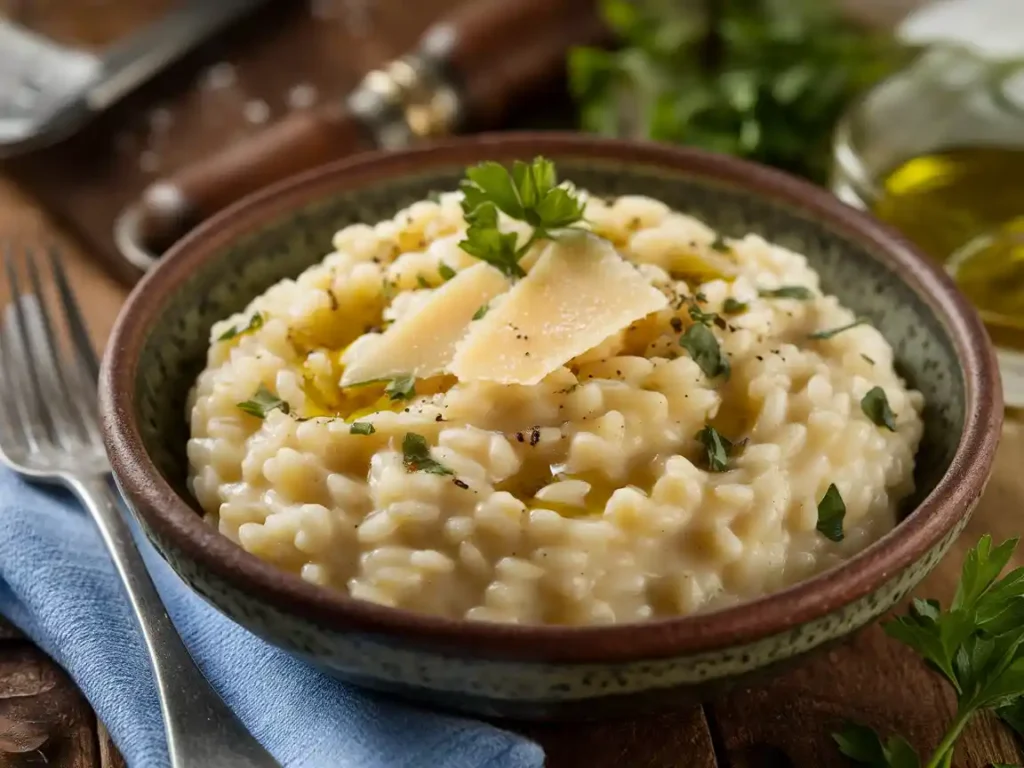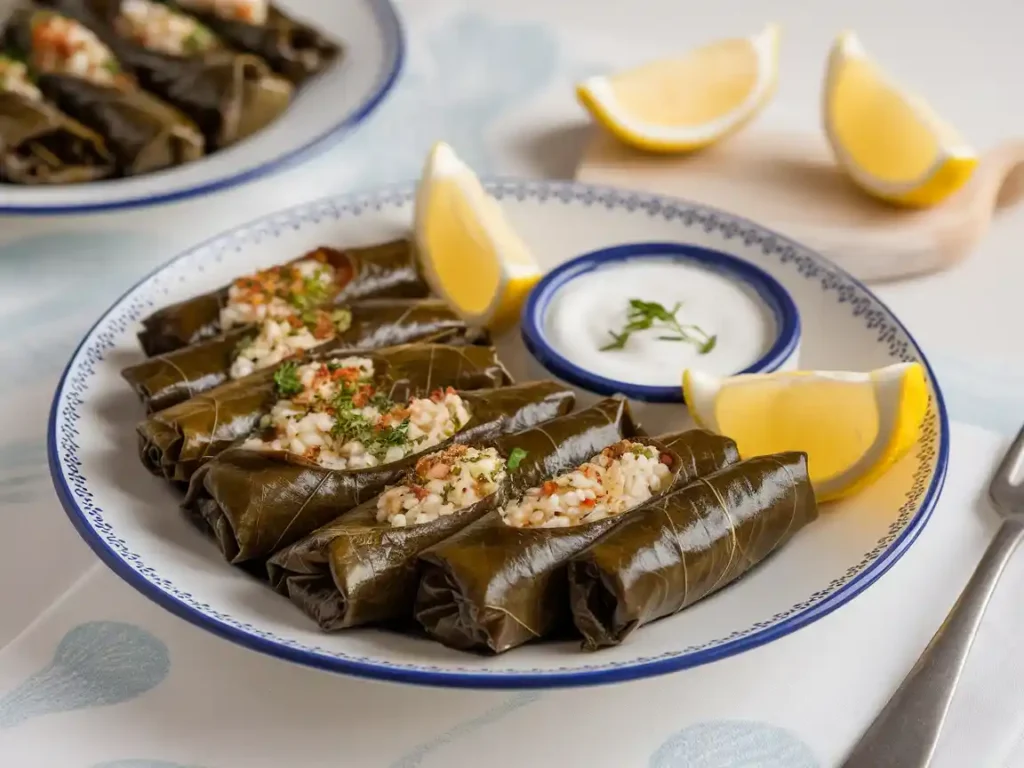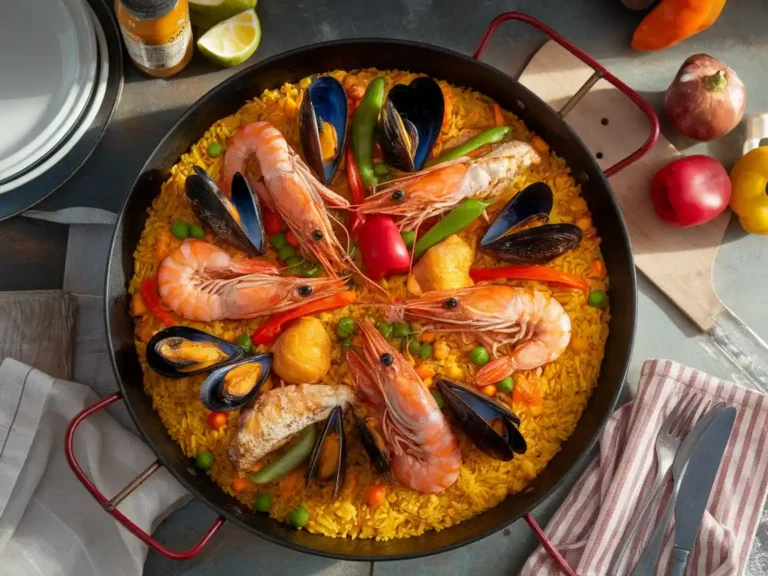Rice is not just a staple in Mediterranean cuisine it’s a culinary star that brings life to countless dishes. Whether it’s the creamy Italian risotto, the vibrant Spanish paella, or the aromatic rice pilaf, the Mediterranean knows how to celebrate this humble grain. But what kind of rice is actually eaten in Mediterranean countries? Let’s dive into the rich world of Mediterranean rice and discover the varieties, their uses, and why this grain has such a special place on dinner tables. 🌾
Table of Contents
Introduction to Rice in Mediterranean Cuisine
The Mediterranean diet has been hailed as one of the healthiest eating patterns in the world, thanks to its focus on whole foods, vegetables, olive oil, and of course rice. Rice in the Mediterranean is versatile, satisfying, and an essential ingredient in many iconic recipes.
From Spain and Italy to Turkey and Egypt, each region has its own preferred rice variety, which enhances the flavor and texture of its traditional dishes. You’ll find everything from short-grain, sticky rice perfect for dolmas to long, aromatic grains ideal for pilaf.
Why does rice work so well in Mediterranean cooking? It’s adaptable. It can be a side dish, the star of the plate, or even the filling for grape leaves. Not to mention, it pairs beautifully with spices, vegetables, seafood, and meats, creating dishes that are not only delicious but also full of history and culture.
Why Is Rice an Important Staple in Mediterranean Countries?
Rice has a deep-rooted history in Mediterranean regions, introduced centuries ago through trade routes and cultural exchanges. Its ability to grow in various climates, from the fertile plains of Italy to the riverbanks of Egypt, made it a natural choice for Mediterranean farmers.
Here’s why rice continues to hold a special place:
- Versatility: Rice works in savory dishes, desserts, soups, and even salads.
- Accessibility: It’s affordable, widely available, and easy to prepare.
- Nutrition: Rice provides energy, essential nutrients, and is gluten-free a perfect choice for people with dietary restrictions.
- Cultural Traditions: Many Mediterranean celebrations and feasts are incomplete without a rice-based dish.
🌟 Fun Fact: Did you know that rice is often considered a “symbol of prosperity” in Mediterranean culture, especially during weddings and other festivities?
Common Types of Rice in Mediterranean Cuisine
The Mediterranean region is vast, and so is its selection of rice. Each type of rice serves a unique purpose, depending on the dish being prepared. Let’s take a closer look at the most popular varieties:
Arborio Rice: A Key Ingredient in Mediterranean Risotto
Arborio rice is a short-grain variety that originates from Italy. It’s best known for its starring role in risotto, a creamy and comforting dish that has become a symbol of Italian cuisine.
- Texture: Arborio rice has a high starch content, which gives risotto its characteristic creaminess.
- Flavor: Mild and slightly nutty, it absorbs flavors beautifully.
- Cooking Tip: Cook Arborio rice slowly with broth, adding liquid a little at a time while stirring constantly.
“A well-made risotto is like a warm hug in a bowl creamy, rich, and soul-soothing.”
Basmati Rice: Fragrant Rice for Mediterranean Delights
Basmati rice, while native to India and Pakistan, has found its way into Mediterranean kitchens, particularly in Middle Eastern and Eastern Mediterranean cuisines. It’s a long-grain rice with a delightful aroma and light, fluffy texture.
- Texture: The grains stay separate and airy when cooked.
- Flavor: Mild, with a subtle floral and nutty aroma.
- Best Uses: Perfect for pilafs, rice salads, and as a base for spiced dishes.
Basmati rice is a favorite when making dishes that require a delicate balance of flavors think rice pilaf or saffron-infused recipes. It’s like the elegant dancer of the rice family, adding grace to every dish it touches. 💃
Valencia Rice: The Traditional Choice for Paella
If you’re a fan of Spanish cuisine, you’ve probably heard of paella, a dish that’s synonymous with Mediterranean Spain. Valencia rice, also known as “Bomba rice,” is the go-to choice for this iconic recipe.
- Texture: Short-grain, slightly firm, and perfect for absorbing liquid without getting mushy.
- Flavor: Neutral but absorbs spices, broth, and saffron beautifully.
- Best Uses: The ultimate rice for paella, stews, and Spanish rice dishes.
🌟 “In Spain, the secret to an unforgettable paella lies in choosing the right rice and Valencia rice never disappoints.”
Baldo Rice: Popular in Turkish and Eastern Mediterranean Dishes
Baldo rice is a medium-grain variety that’s widely used in Turkish cuisine and beyond. It’s prized for its creamy yet firm texture, making it ideal for pilafs and stuffed dishes.
- Texture: Creamy but holds its shape when cooked.
- Flavor: Mild, allowing other ingredients to shine.
- Best Uses: Pilafs, dolmas, and rice-based casseroles.
If you’re looking to experiment with Turkish flavors, start with Baldo rice it’s a versatile companion to meats, vegetables, and aromatic spices.
Egyptian Rice: A Short-Grain Staple in Mediterranean Meals
Egyptian rice is a short-grain variety that’s commonly enjoyed in North African Mediterranean cuisine. It’s soft, slightly sticky, and often paired with bold flavors like garlic, cumin, and fresh herbs.
- Texture: Soft and sticky, perfect for rich, hearty dishes.
- Flavor: Neutral, making it ideal for absorbing seasonings.
- Best Uses: A base for stews, stuffed vegetables, or as a side dish.
Egyptian rice brings comfort to every meal, much like a warm blanket on a chilly evening. It’s simple, satisfying, and always hits the spot.
Popular Mediterranean Dishes That Use Rice
Rice is at the heart of many Mediterranean dishes, and each recipe tells a story of tradition, culture, and flavor. Let’s explore some of the most iconic rice-based meals that bring people together across the Mediterranean.
Paella: The Classic Spanish Rice Dish
When you think of Mediterranean rice dishes, paella often comes to mind first. Originating in the Valencia region of Spain, paella is a feast for the senses with its vibrant colors, bold flavors, and satisfying textures.
- Ingredients: Valencia rice, saffron, vegetables, seafood, or chicken.
- Why It Works: The short-grain rice absorbs the rich broth and saffron, creating a flavorful, slightly chewy bite.
Cooking paella is an art, and it’s often prepared in a large, flat pan to ensure the rice cooks evenly. The crispy layer of rice at the bottom known as socarrat is the ultimate treat!
“Paella isn’t just a dish; it’s an experience that brings family and friends around the table.”
Risotto: A Creamy Italian Favorite
Risotto is Italy’s answer to a luxurious comfort food, and it’s made with Arborio rice or other short-grain varieties. The dish is creamy without needing cream it’s all thanks to the starch released from the rice during slow cooking.
- Ingredients: Arborio rice, broth, butter, cheese, and wine.
- Why It Works: The rice absorbs liquid slowly, creating a creamy, velvety texture that’s incredibly satisfying.
The beauty of risotto lies in its versatility. Whether you add mushrooms, seafood, or asparagus, it’s always a crowd-pleaser.
Pro Tip: Stirring the risotto constantly is key to achieving that perfect creaminess! 🥄
Dolma: Rice-Stuffed Grape Leaves in Eastern Mediterranean Cuisine
Dolma is a beloved dish in Eastern Mediterranean countries like Turkey, Greece, and Lebanon. The word “dolma” means “stuffed,” and grape leaves are often filled with a mixture of rice, herbs, and spices.
- Ingredients: Short-grain rice, grape leaves, fresh herbs (like mint and parsley), and olive oil.
- Why It Works: The rice absorbs the flavors of the herbs and olive oil, creating a refreshing yet hearty bite.
Dolma can be served hot or cold, often as an appetizer or part of a mezze spread. It’s a dish that celebrates simplicity while delivering big on flavor.
Pilaf: A Fragrant Rice Dish Across the Mediterranean Region
Pilaf (or pilav) is a versatile rice dish enjoyed across the Mediterranean and Middle East. It’s usually made with long-grain rice, cooked in seasoned broth, and sometimes includes vegetables, nuts, or dried fruits.
- Ingredients: Basmati or Baldo rice, broth, spices (like cumin or saffron), and optional add-ins.
- Why It Works: The rice stays light and fluffy while absorbing the aromatic broth, making it a perfect side dish or main course.
Each region has its own spin on pilaf. For instance, in Turkey, it’s often paired with lamb or chicken, while in Greece, you might find pilaf served with fresh seafood.
Nutritional Value of Mediterranean Rice Varieties
You might be wondering besides being delicious, what makes Mediterranean rice so good for you? Each type of rice offers unique health benefits that complement the Mediterranean diet’s focus on balanced nutrition.
- Carbohydrates for Energy: Rice is a great source of complex carbohydrates, providing the energy you need for a busy day.
- Low Fat: Most rice varieties are naturally low in fat, making them a healthy choice for your meals.
- Gluten-Free: For those with gluten sensitivities, rice is an excellent alternative to wheat-based grains.
- Rich in Vitamins and Minerals: Rice contains B vitamins, magnesium, and iron, which support energy production and overall health.
Different types of rice also have varying glycemic indexes (GI):
- Short-Grain Rice (like Arborio): Higher GI but great for indulgent dishes.
- Long-Grain Rice (like Basmati): Lower GI, making it a healthier choice for maintaining blood sugar levels.
🌟 If you’re following a Mediterranean diet for its health benefits, incorporating rice can add variety, nutrients, and satisfaction to your meals.
Differences Between Short-Grain, Medium-Grain, and Long-Grain Rice
Understanding rice varieties is key to creating the perfect Mediterranean dish. Here’s a quick breakdown of the differences:
Short-Grain Rice
- Texture: Soft, sticky, and chewy.
- Best For: Risotto, dolma, and dishes where creaminess or stickiness is needed.
Medium-Grain Rice
- Texture: Firm yet tender with moderate stickiness.
- Best For: Pilafs, stews, and casseroles.
Long-Grain Rice
- Texture: Light, fluffy, and separate when cooked.
- Best For: Pilaf, rice salads, and as a base for saucy dishes.
Choosing the right rice can make or break your dish. Imagine trying to make a creamy risotto with Basmati rice it just wouldn’t work! Always match the grain to the recipe for the best results. 🍚
The Role of Rice in the Mediterranean Diet
The Mediterranean diet is celebrated for its heart-healthy benefits, and rice plays a key role in this eating pattern. Rice complements the diet’s focus on whole foods like vegetables, legumes, and olive oil.
Here’s why rice is a perfect fit:
- It provides a satisfying, low-fat carb source that pairs well with plant-based proteins.
- It’s a neutral canvas that allows the fresh flavors of herbs, spices, and olive oil to shine.
- It’s versatile enough to be used in both main dishes and sides, adding variety to the diet.
When enjoyed in moderation and paired with lean proteins, vegetables, and healthy fats, rice becomes an integral part of a balanced Mediterranean lifestyle.
Quote for Thought:
“Rice isn’t just a grain; it’s the glue that binds Mediterranean flavors together into one perfect dish.”
How to Choose the Right Rice for Mediterranean Recipes

Selecting the right rice is crucial for achieving the perfect dish. The Mediterranean region features a variety of recipes that call for specific textures and flavors. But how do you know which type of rice to use? Here’s a simple guide to help you choose wisely.
Factors to Consider: Texture, Flavor, and Cooking Time
- Texture: For creamy dishes like risotto, you need short-grain rice such as Arborio, which releases starch during cooking. For light, fluffy dishes like pilaf, long-grain varieties like Basmati or Baldo are ideal.
- Flavor: Some rice varieties, like Basmati, have a subtle nutty aroma that enhances dishes, while others, like Valencia rice, are more neutral and absorb flavors beautifully.
- Cooking Time: If you’re short on time, medium-grain rice cooks faster but still delivers a delicious texture. For slow-cooked dishes like paella, patience pays off with short-grain Valencia rice.
Tips for Cooking Rice Perfectly for Mediterranean Dishes
Cooking rice might seem simple, but it’s easy to get wrong if you’re not careful. Here are a few tried-and-true tips for cooking rice perfectly every time:
- Rinse the Rice: For most recipes, rinsing removes excess starch, preventing the rice from becoming gummy. (Except for risotto you want that starch!)
- Use the Right Ratio: Follow the water-to-rice ratio carefully. Long-grain rice typically requires 1:2, while short-grain rice may need less water.
- Don’t Over-Stir: Over-stirring can break the grains, resulting in mushy rice. Risotto is the exception because stirring creates its creaminess.
- Rest Before Serving: Let the rice sit for a few minutes after cooking. This allows it to fluff up beautifully.
Cooking Mediterranean rice is an art, and once you master it, you’ll unlock a whole new world of flavors and possibilities.
Common Problems When Cooking Rice for Mediterranean Cuisine
Even the most experienced cooks can run into problems when cooking rice. Whether it’s mushy, undercooked, or just plain tasteless, we’ve all been there. Let’s troubleshoot the most common rice-cooking issues and their solutions.
Rice Is Too Sticky or Mushy: Causes and Solutions
- Cause: Too much water or not rinsing the rice beforehand.
- Solution: Always rinse your rice (unless cooking risotto). Use the correct water-to-rice ratio and avoid overcooking.
Quick Fix: If your rice turns mushy, spread it on a baking sheet and let it dry in the oven at a low temperature.
Undercooked Rice: Troubleshooting Tips
- Cause: Not enough water or cooking time.
- Solution: Add a splash of water or broth, cover, and cook for a few extra minutes on low heat.
Tip: For dishes like paella, ensure the rice simmers gently without burning the bottom.
Achieving the Perfect Rice Texture for Specific Mediterranean Recipes
- For paella, the rice should be firm but fully cooked, with a slightly crispy bottom.
- For risotto, aim for a creamy texture while keeping the grains al dente.
- For pilaf, the grains should be light, fluffy, and separate.
When you follow these tips, you’ll say goodbye to rice-related disasters and hello to perfectly cooked dishes every time. 🍚
Health Benefits of Including Mediterranean Rice in Your Diet
We’ve talked about the taste and versatility of Mediterranean rice, but did you know it’s also good for your health? Incorporating rice into your diet, especially within a Mediterranean context, offers numerous benefits:
Rice as a Source of Energy and Fiber
Rice, particularly brown or unprocessed varieties, is rich in complex carbohydrates, providing a steady source of energy. It’s also a great source of dietary fiber, which helps:
- Regulate digestion.
- Prevent constipation.
- Maintain healthy blood sugar levels.
Gluten-Free Benefits of Mediterranean Rice
For people with gluten intolerance or celiac disease, rice is a lifesaver. Unlike wheat, barley, or rye, rice is naturally gluten-free. This makes it an excellent choice for Mediterranean recipes that are safe for those with dietary restrictions.
“Incorporating rice into your diet ensures you get the energy and nutrition you need without sacrificing flavor or texture.”
rice becomes part of a balanced, heart-healthy meal that supports overall well-being.
The Sustainable Cultivation of Rice in Mediterranean Regions

Sustainability is a growing concern in today’s world, and the Mediterranean has long practiced eco-friendly rice cultivation methods. Rice fields in regions like Italy, Spain, and Egypt support local economies while protecting ecosystems.
- Water Management: Rice fields are carefully irrigated to conserve water while maximizing crop yields.
- Crop Rotation: Many farmers rotate rice with other crops to maintain soil health and reduce pests naturally.
- Biodiversity: Rice paddies support a variety of wildlife, including birds and aquatic species, contributing to a balanced ecosystem.
Supporting locally grown rice not only preserves these traditional farming practices but also reduces the carbon footprint of imported grains.
How Rice Influences Mediterranean Culinary Traditions and Culture
Rice is more than just a food in the Mediterranean it’s a symbol of culture, hospitality, and shared traditions. Across the region, rice-based dishes play a central role in family gatherings, celebrations, and everyday meals.
- In Spain, paella is prepared for special occasions and family feasts.
- In Italy, risotto brings comfort and elegance to meals, whether simple or gourmet.
- In Turkey and Greece, rice-stuffed grape leaves (dolmas) are a staple of mezze spreads.
- In Egypt, rice accompanies stews and hearty dishes, offering warmth and satisfaction.
Whether it’s a communal pan of paella shared among friends or a comforting bowl of risotto on a rainy evening, rice brings people together across the Mediterranean. It’s a food that transcends borders, telling stories of tradition, connection, and love.
Final Thoughts: Celebrating Rice in Mediterranean Cuisine
Rice in Mediterranean cuisine is more than just an ingredient it’s a celebration of flavor, culture, and health. From the creamy risotto of Italy to the vibrant paella of Spain, each dish showcases the versatility and beauty of rice. Whether you’re cooking for family, friends, or just yourself, Mediterranean rice dishes offer something for everyone.
So, the next time you’re in the kitchen, why not explore the flavors of the Mediterranean? Choose the right rice, pair it with fresh ingredients, and savor the magic of a cuisine that’s as rich in tradition as it is in taste. 🍽️
Frequently Asked Questions About Mediterranean Rice
Q: What is the best rice for paella?
A: Valencia or Bomba rice is the top choice for paella due to its ability to absorb broth without getting mushy.
Q: Is Mediterranean rice healthy?
A: Yes! Rice is low-fat, gluten-free, and packed with energy, vitamins, and minerals making it a great addition to the Mediterranean diet.
Q: Can I use Basmati rice for risotto?
A: No, risotto requires short-grain rice like Arborio, which releases starch for creaminess. Basmati is too light and fluffy for this dish.

